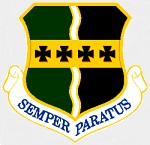Hobby Master HA5411 USAF Northrop T-38A Talon Jet Trainer - 65-10342, 1st Reconnaissance Squadron, 9th Reconnaissance Wing, Beale AFB, California, 2006 (1:72 Scale)
"Television brought the brutality of war into the comfort of the living room. Vietnam was lost in the living rooms of America - not on the battlefields of Vietnam."
- Marshal McLuhan
 The Northrop T-38 Talon is a two-seat, twin jet supersonic jet trainer designed and produced by the American aircraft manufacturer Northrop Corporation. It was the world's first supersonic trainer as well as the most produced.
The Northrop T-38 Talon is a two-seat, twin jet supersonic jet trainer designed and produced by the American aircraft manufacturer Northrop Corporation. It was the world's first supersonic trainer as well as the most produced.
The T-38 can be traced back to 1952 and Northrop's N-102 Fang and N-156 fighter aircraft projects. During the mid-1950s, Northrop officials decided to adapt the N-156 to suit a recently issued general operating requirement by the United States Air Force (USAF) for a supersonic trainer to replace the Lockheed T-33. The bid was successful, in no small part on its lower lifecycle cost comparisons to competing aircraft, and the company received an initial order to build three prototypes. The first of these, designated YT-38, made its maiden flight on April 10th, 1959. The T-38 was introduced to USAF service on March 17th, 1961.
The USAF is the largest operator of the T-38. Additional operators of the T-38 include NASA and the United States Navy. U.S. Naval Test Pilot School in Patuxent River, Maryland, is the principal US Navy operator. Other T-38s were previously used by the US Navy for dissimilar air combat training until replaced by the similar Northrop F-5 Tiger II. Pilots of other NATO nations have commonly flown the T-38 during joint training programs with American pilots. The T-38 remains in service as of 2023 with several air forces. As of 2023, the T-38 has been in service for over 60 years with the USAF, its original operator. In September 2018, USAF announced the replacement of the Talon by the Boeing-Saab T-7 Red Hawk with phaseout to begin in 2023.
Pictured here is a 1:72 scale replica of a USAF Northrop T-38A Talon jet trainer that was attached to the 1st Reconnaissance Squadron, 9th Reconnaissance Wing, then deployed to Beale AFB, California, during 2006. Sold Out!
Dimensions:
Wingspan: 4-1/4-inches
Length: 7-3/4-inches
Release Date: January 2025
 Historical Account: "Eyes on Target" - The 1st Reconnaissance Squadron (1st RS) is a United States Air Force squadron, assigned to the 9th Operations Group, Beale Air Force Base, California.
Historical Account: "Eyes on Target" - The 1st Reconnaissance Squadron (1st RS) is a United States Air Force squadron, assigned to the 9th Operations Group, Beale Air Force Base, California.
The 1st Reconnaissance Squadron is the United States military's oldest flying unit, first established on March 5th, 1913. The squadron has maintained an unbroken heritage of over a century from its founding. Originally organized in anticipation of a potential breach in security along the border between the United States and Mexico, General John J. Pershing directed the 1st Aero Squadron to become the first tactical aviation unit to participate in American military action. The 1st RS has flown 47 different aircraft while being stationed worldwide at 52 locations, including 4 stints at sea.
Since 1922, the 1st Squadron has been associated with the 9th Bomb Group and the USAF 9th Reconnaissance Wing, where it continues to be an active flying training unit operating the Lockheed U-2 and the RQ-4 Global Hawk surveillance aircraft.
Overview
This plaque was unveiled March 8th, 2013, on Beale Air Force Base, celebrating the 100-year anniversary of the 1st Reconnaissance Squadron.
The 1st Reconnaissance Squadron is responsible for training all High-Altitude Intelligence, Surveillance, and Reconnaissance aircrew for the U-2S Dragon Lady and the RQ-4 Global Hawk. Aircrew members consist of pilots and mission planners for the U-2S, and pilots and sensor operators for the RQ-4. Training for all U-2S pilots includes additional qualification in the T-38A Talon, the companion trainer to the U-2S.
The squadron flies over 5,400 U-2S/T-38A training hours and 2,400 RQ-4 combat support hours annually. This flight training program produces 24 U-2S pilots, 48 RQ-4 pilots, and 36 RQ-4 sensor operators annually.


